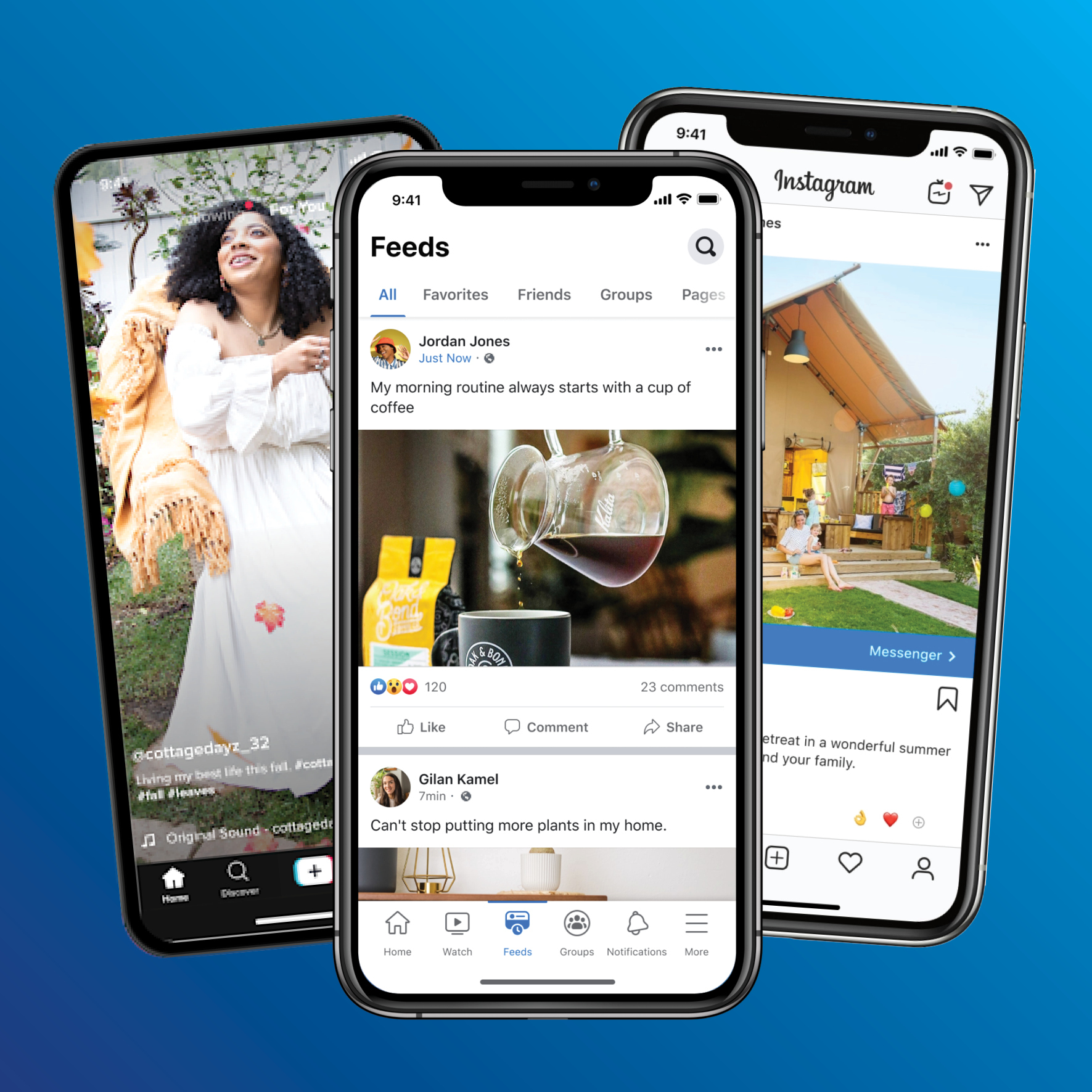I clearly remember first time I was told Facebook was for “old people.” I was at Mayfair Mall in Milwaukee, Wisconsin with my Gen Z step sibling, who was the conveyor of this shocking information. Sure, direct marketing invitations to join Lularoe “flash sales” and imbibe “revolutionary diet smoothies” had increased since I joined the platform. But it was hard to imagine that the second social media network I had ever joined –– after MySpace –– had already become passe.
This was eight years ago. Instagram was, as of yet, still a flash in the pan. My memory of Facebook opening up to the general public, rather than requiring a college ID number for signup, was still fresh in my mind. How times change.
Only 18 percent of Facebook users are between 18 to 24 years old, whereas 40 percent of TikTok users are in that demographic. Nearly 11 percent of Facebook users are over 65 years old, which means that users aging out of the platform is a very real concern.
Today, 7 in 10 Americans use social media to connect with one another, view and create content, and interface with their favorite brands. Facebook has become a social taboo in which many of us still engage. It’s social media’s answer to Amazon: we aren’t proud to use it, but everyone we know does and we know exactly what we’re going to get.
Let’s take a look at social media platform usage by demographic and how retailers are using these platforms creatively to get through to new customers.
Facebook and Instagram Drama Alienates Few
Is Facebook a simple social media platform or a tool for psychological warfare? It all depends on who you ask. After the Cambridge Analytica Scandal, a lot of platform users blamed Facebook for the role it played in the 2016 election. Everyone’s worst fears about social media platforms were suddenly coming true and it felt like we were involuntarily catapulted into an episode of Black Mirror.
Facebook’s 50 million users and the American Federal Government had been manipulated. During an election. For profit. And Russian political gain. Once Facebook’s role in the election came to light, shares and likes on the platform decreased by 20 percent. The number of platform users, however, continued to grow.
Many Facebook users paid lip service to the idea of leaving Facebook…on Facebook. But few followed up on their threats for a long enough timespan to create a significant impact. Large scale political manipulation wasn’t enough to quell Facebook’s skyrocketing user numbers. But there’s another factor, something quite a bit tamer, that just might be.
We Need to Talk About User Age
One thing we talk about a lot in retail, but haven’t yet had to address with social media, is the phenomenon of “aging out.” This happens when a brand, performer or social media platform’s core audience becomes too old to continue their patronage or begins to die off. It’s a natural phenomenon that most try to avoid discussing, and Facebook will be the first major social media platform to experience the phenomenon.
Statista reports that of Facebook users, just 18.5 percent belong to the 18 to 24-year age group. Another 18 percent fall between 35 to 44 years old. While 13.7 percent of Facebook users are 45 to 54, another 11 percent are 55 to 64, and 10.8 percent are over 65 years old. But here’s what’s notable: Facebook’s smallest audience is its teen users. Just one in every twenty Facebook users is between 13 and 17 years old.
Facebook’s sister platform, Instagram, is known for having a younger user demographic. However, when you look at the numbers it quickly becomes clear that Instagram’s user base isn’t much younger than Facebook’s core demographic. Just 27.3 percent of Instagram’s audience in the United States were ages between 25 and 34 years old, while 25.9 percent fell between the ages of 18 and 24. But critical users between 13 and 17 years old accounted for just 5.9 percent of Instagram’s U.S. user base.
Compare this to TikTok’s popularity among young users: 39.91 percent of all TikTok users are between the ages of 18 and 24. Are you starting to see how Facebook and Instagram’s “uncool” status will soon impact the retailers that sell and advertise with them? Let’s reiterate: 18 percent of Facebook users are between 18 to 24 years old, whereas 40 percent of TikTok users are in that demographic. Nearly 11 percent of Facebook users are over 65 years old, which means that users aging out of the platform is very real concern.
Reasons Behind the Exodus
Facebook isn’t just uncool these days, it’s untrustworthy. Next gens grew up in a cancel culture, so they won’t quickly forgive and forget Facebook’s role in the Cambridge Analytica Scandal. Besides, their parents and grandparents are on Facebook. So, while they may use it to connect with elder family members, it’s not where they’re looking for their next cool hoodie or pair of kicks. Both YouTube and Instagram have tried to monopolize on TikTok’s unique niche with next gens, creating YouTube Shorts and IG TV. But trend followers aren’t trendsetters… and the kids know this.
To successfully advertise and sell on social media, retailers need to go beyond researching who is using what platform. They also need to know what functions customers fulfill on each platform. We know that one-third of Facebook customers have bought a product directly from Facebook. Whether that one-third purchased through corporate advertising, a direct sales post from a friend or family member (Lularoe rears its ugly head), Facebook Live, or another method needs to be taken into consideration. As does the nature of the product being advertised. Facebook may be a better place to sell gifts for family members and home goods. Whereas Instagram is a fashion destination.
The bottom line? Don’t judge advertising performance by user demographics. Every social media platform is used for different purposes by different demographics. People from drastically different demographics may buy the same thing for different reasons. Understanding this will help retailers conceive of a more streamlined, targeted social media strategy. So, they can stay cool and relevant… no matter whom they’re selling to.




